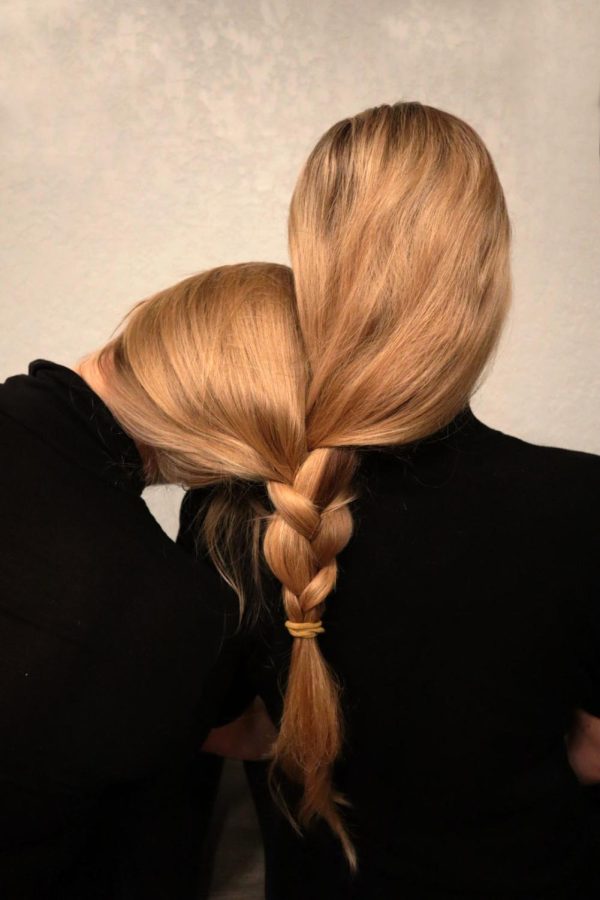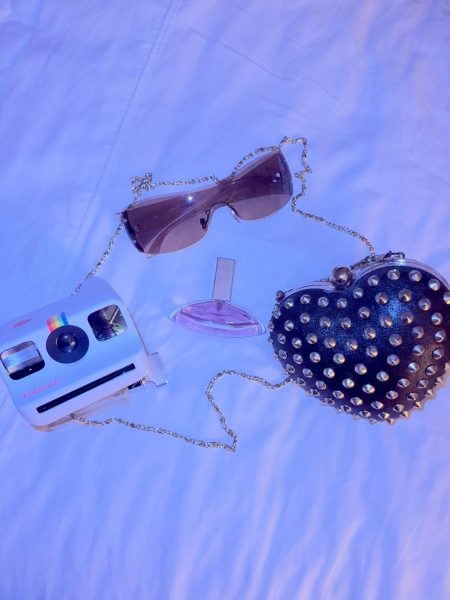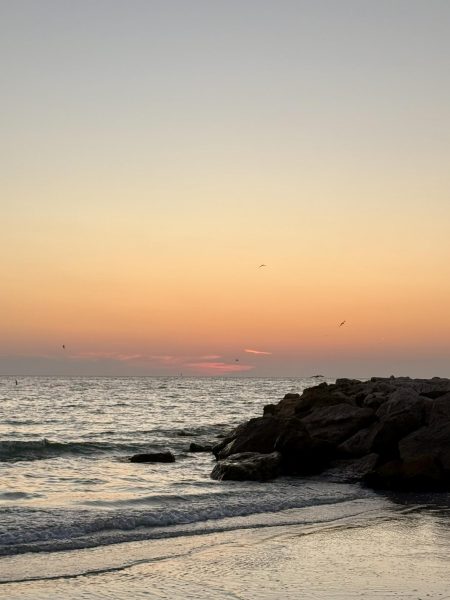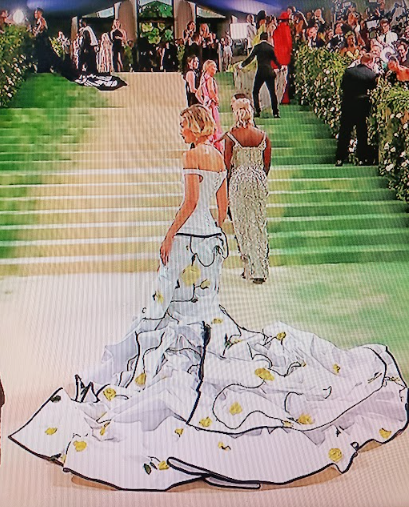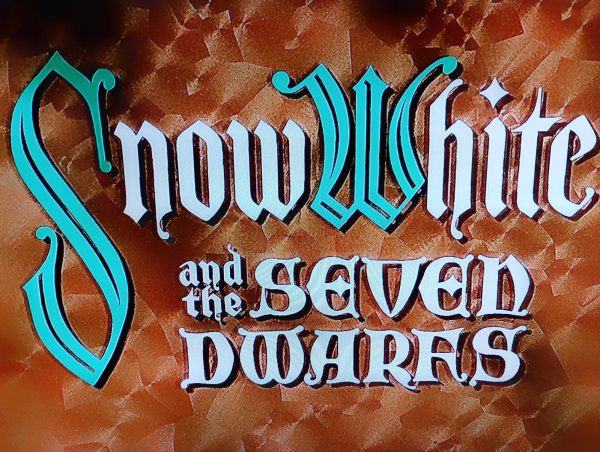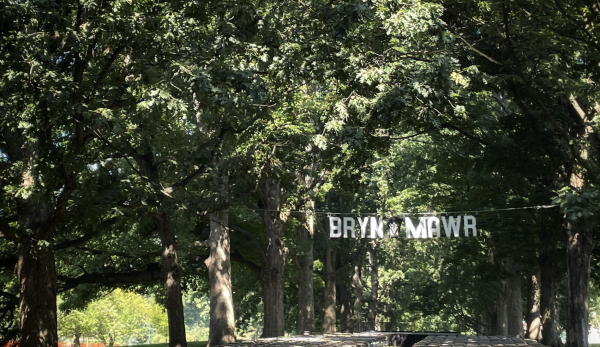The SPHS Scholastic Champions
Gloria Privis’ piece entitled ‘Unity’ is in connection to the Russia-Ukraine War. The picture shows two women, her mother and her cousin, with their hair braided together.
The results are in! Four Green Devils here at St. Petersburg High School are being recognized for their contributions to the National Scholastic Art and Writing Awards. Around 240,000 students in the United States and Canada from grade level 7th-12th submit their artwork to Scholastic, which is then judged based on skill, originality, and voice. Among the submitted works, 40,000 were regionally awarded, and 2,000 were awarded the gold key, a Scholastic national award. Fourteen St. Pete High students were awarded regionally, including eight receiving regional gold keys and four continuing at the national level to win three Silver Medals and the American Visions Medal. Ms. Koral, St. Pete High’s newest art teacher and the mastermind behind this Scholastic success, said, “A Scholastic award is one of the most prestigious in the country.” Intrigued by this fantastic accomplishment for the St. Pete High students, I sought to interview Ms. Koral and the four national winners, Julia Reed, Hana Geltzer, Olivia Tucker, and Gloria Privis, to get an inside scoop on their thoughts about the overwhelming success.
Before we knew that three students won silver medals and that Gloria Privis won the American Visions Medal, the five reported initial distress due to Scholastic’s website crash. A friend of Ms. Koral, who is also an art teacher, informed her of the winners since Ms. Koral could not access the website. Initially, Ms. Koral was a bit upset that there were no gold medal winners for our school, but the next day, she realized Gloria had won the American Visions Medal. The two will fly to New York in the summer to receive recognition at the Metropolitan Museum of Art for Gloria’s piece ‘Unity.’
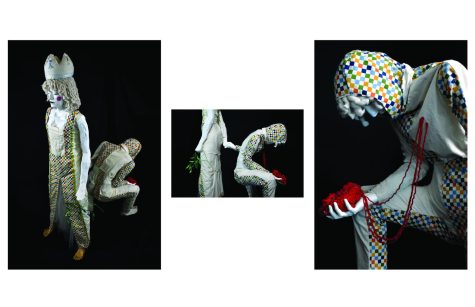
This success did not come without hard work. Ms. Koral’s students worked for 3-4 months before submitting for judging in December. Olivia Tucker, a silver medalist, states, “My process was really slow [in the beginning], and then I did a lot in a very small amount of time.” Her work, entitled ‘The King, the Jester, and I,’ is a life-sized 3D piece that involved resolving the support and balance of the two human-sized figures, mold casting her hands and other parts of her body, sewing the clothes, and creating the other accessories such as a yarn heart and a paper-wire olive branch. She reports that making the clothes took around two weeks, building the first person and the accessories took two to three weeks, and finally, what she describes as “a very restless three days” taken to put together the second person and the rest of the art piece.
Yet, the photography students report the process to be a bit easier. Silver Medalist Julia Reed states that her piece was “really random” and “just an assignment” that she turned in for her midterm. She did not think it would get her this far. Hana Geltzer, another Silver Medalist, states that her photo was taken very last minute and took about a day to edit. Laughingly, Gloria Privis, winner of the American Visions Award, said it took around “10 seconds to take the picture,” and “editing… at most took [her] 10 minutes.” Julia Reed’s takeaway from the experience was that “if you just put something in a show, just see where it takes you… go the extra mile.” “If you don’t get anything back, then oh well… but you never know how far something can take you.”
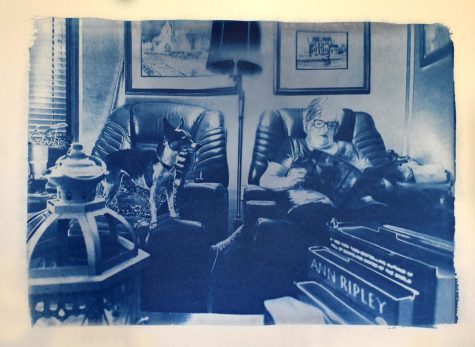
Julia Reed’s cyanotype entitled ‘Gone’ pictures her grandmother sitting in her recliner and her grandmother’s dog sitting in the recliner next to her, which previously belonged to Julia’s grandfather, that passed away around two years ago. The piece is symbolic of his passing and the loss of his presence in the environment; Julia’s grandparents shared together.
Gloria Privis’ piece entitled ‘Unity’ is in connection to the Russia-Ukraine War. The picture shows two women, her mother and her cousin, with their hair braided together. She wanted to show that “even though Russia and Ukraine are two different nations, the people are the same (in regards to their history)– they are basically fighting themselves,” which was also symbolic through both hair colors being the same color. Her mother is from St. Petersburg, Russia, and her father is from Ukraine. As she still has family in Ukraine, she wanted to create a piece that was close to her, resulting in this compelling message showcased in the art piece.
Similar to the students being unsure as to what might happen in the competition, Ms. Koral says that this experience has been like taking shots in the dark, as she is new to the county and to the school. Regardless, it is clear she has made the arts her own for the taking. Both Julia Reed and Gloria Privis won $200 PAEA regional scholarships for their pieces to Scholastic. Additionally, Ms. Koral’s students have made it into every art show this year, including the student surrealist art exhibit “The Shape of Dreams” at the Dalí Museum, the Museum of Fine Arts 2023 Visual Metaphor exhibit, and the 2023 Gasparilla Festival of the Arts, in which Hana Geltzer won a $500 scholarship for her piece ‘No More Silence,’ the piece that won her a Silver Medal in Scholastic. The piece is inspired by the Missing and Murdered Indigenous Women Movement, a movement advocating for the end of violence and crime against Native women and girls, as well as all Native people. Geltzer aimed to create a piece relating to her Alaskan Native culture, with the goal of representing a prevalent issue.
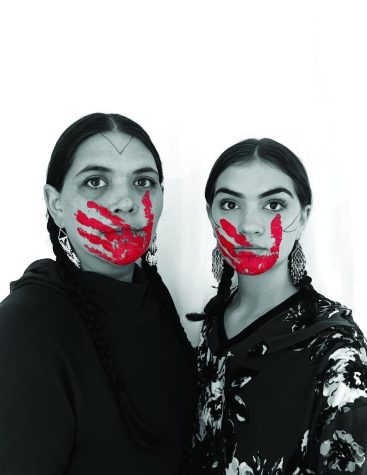
From the interviews, it seems that this has been a life-changing experience. Gloria Privis has chosen to take AP Art next year, and she believes that going to New York over the summer will open up new opportunities for her. She is even considering going to an art school in college. Julia Reed says that she may receive more recognition in the art community and that the award can be advantageous, as well as beneficial to how people view her and her art. Hana Geltzer, after the entire experience, stated, “It was very inspiring because I didn’t think that art, especially made from me, [meant] so much to anyone.” Olivia Tucker says that she is beginning to take art more seriously. Despite the obstacles that come with creative pursuits, she stated, “I know that I can do it; I did a really hard thing and a really cool thing, but I did it,” she says. While the four are still in shock and disbelief, they also report an added sense of pressure now that they have won a national award. Gloria acknowledges that she has set a high standard for herself and that consensus seems to remain true for most of the Scholastic winners.
Despite this, the bond between Ms. Koral and her students is undeniable. As Ms. Koral states, “It takes an educator to change and inspire your life.” In the interview, she says, “While [the students] are talented, it is the educator’s job to be a guide.” Educators, to her, are path changers and can change somebody’s life. Her work with the students now is building a bridge of knowledge and skill they can use ten years down the road, and that is evident by how winning this award has changed all four of their lives and their perceptions of what they can achieve. The success is indicative of what Ms. Koral is capable of achieving as an educator. “Anybody can do this; you just have to have a good teacher– a good teacher makes all of the difference,” says Julia Reed.
We are so proud of the National Scholastic Art and Writing Award winners here at St. Petersburg High School, and a special thank you to the educators at St. Pete High who are making a difference in students’ lives every day. Educators truly are path-changers, and what we students learn from teachers like Ms. Koral and many other teachers here is invaluable. Thank you to teachers for facilitating greatness and granting students the confidence and skills to achieve their goals, a lesson that they will carry with them throughout their years.


